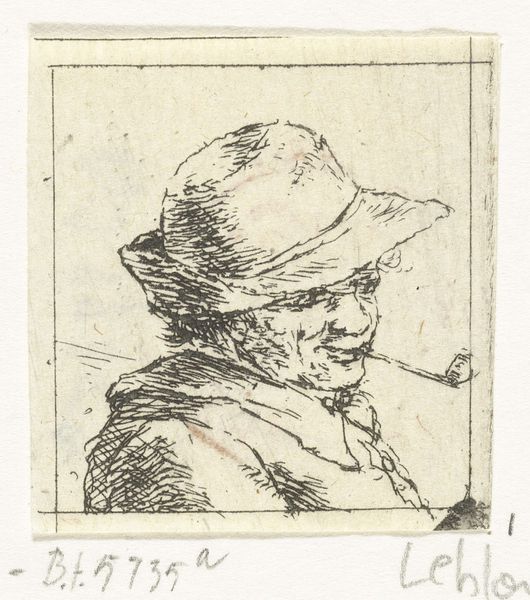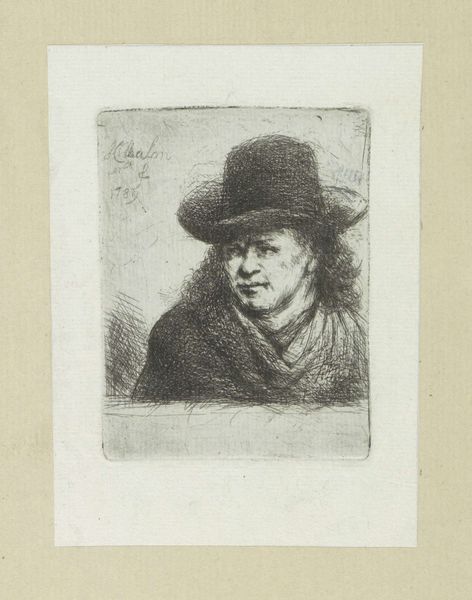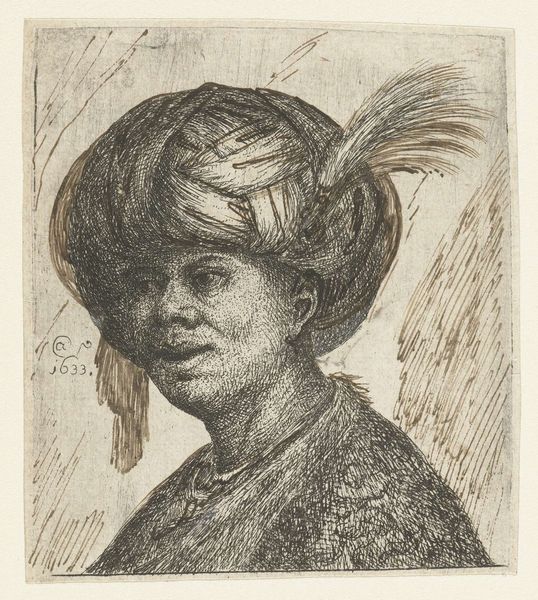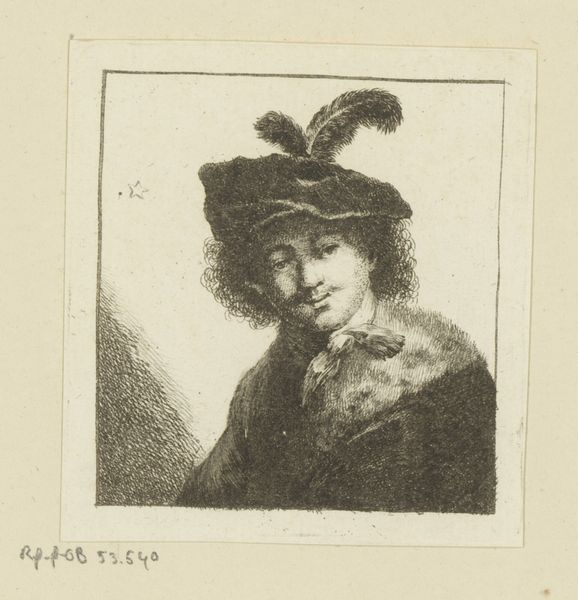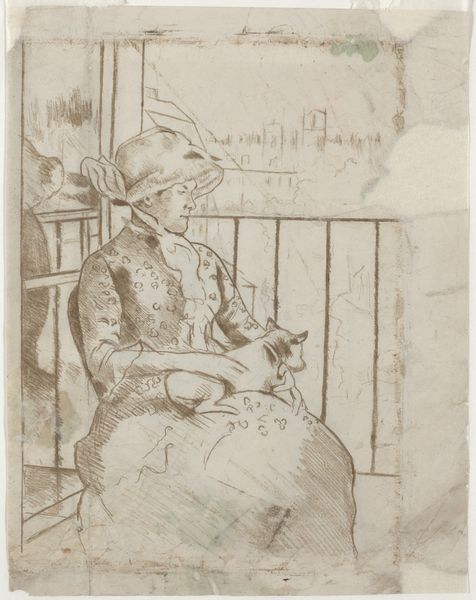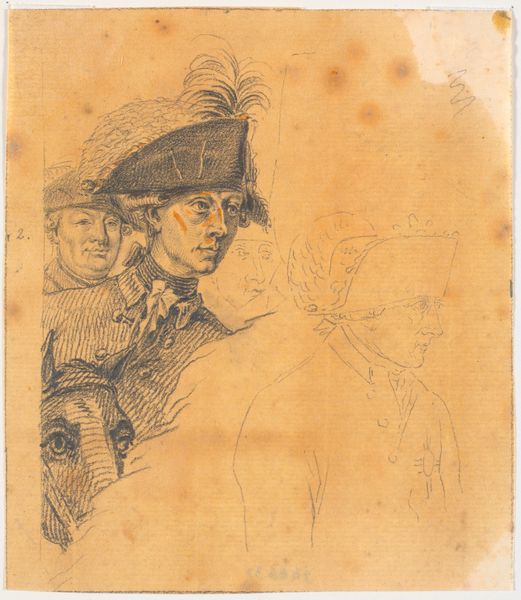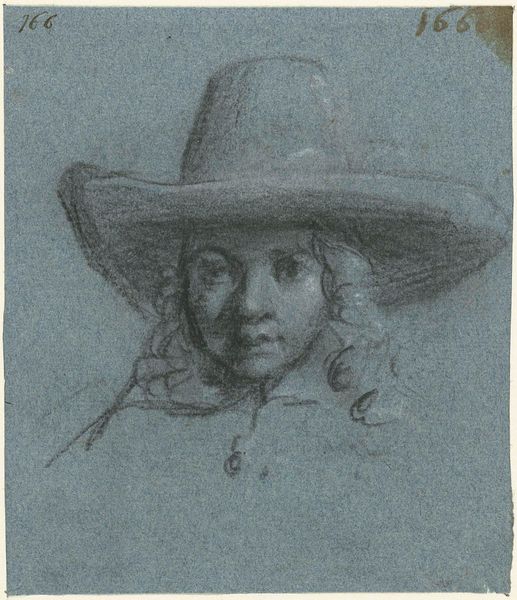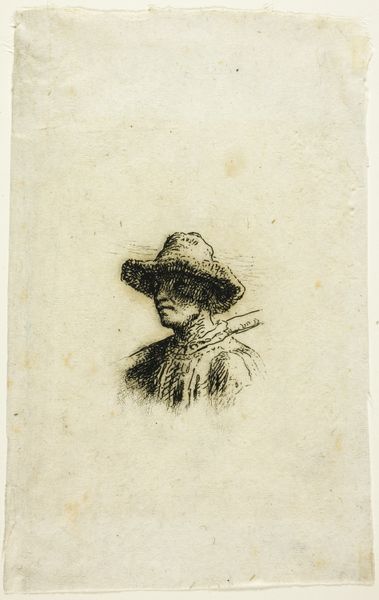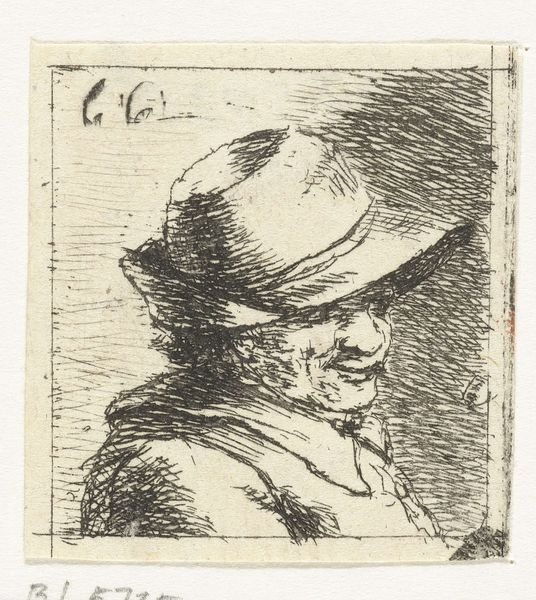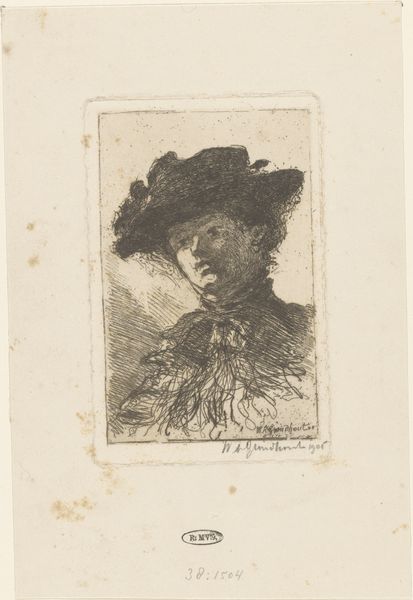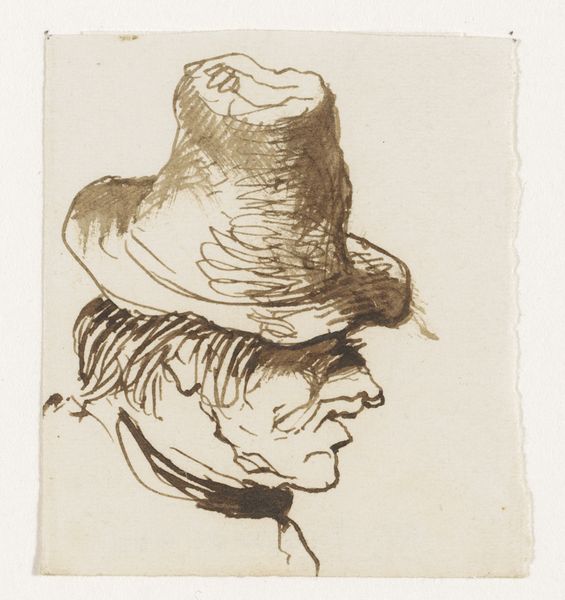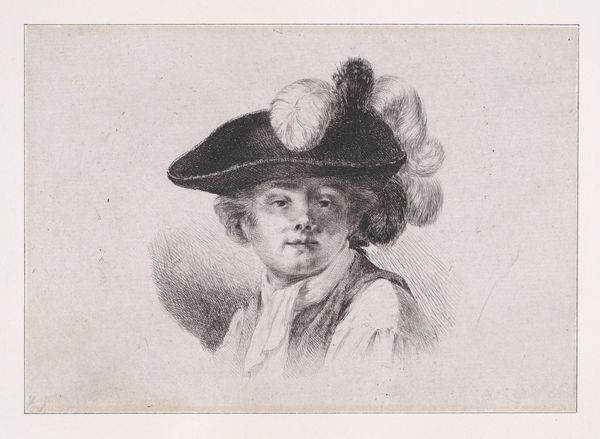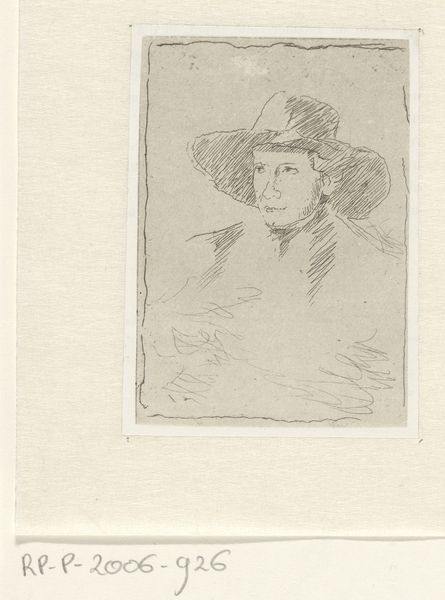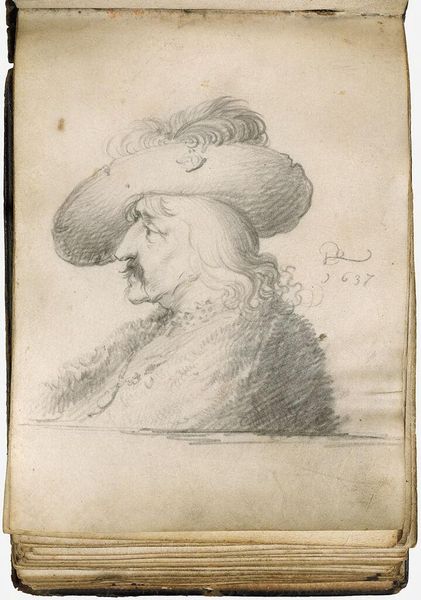
drawing, etching
#
portrait
#
drawing
#
self-portrait
#
baroque
#
etching
Dimensions: height 64 mm, width 50 mm
Copyright: Rijks Museum: Open Domain
Editor: Here we have Willem Drost's "Self-Portrait" from 1652, created as an etching. It's fascinating, the sketch-like quality makes it feel so immediate. I wonder, what historical insights can you glean from this piece? Curator: It’s tempting to focus on individual genius, but let's look at the larger forces. Etchings like this were a way to disseminate an artist's image, weren’t they? A form of early public relations. Editor: That's interesting! Almost like a proto-Instagram post? Curator: Perhaps. Think about it: in the mid-17th century, the Dutch Republic saw a rising middle class with money to spend. This wasn't just about skill; it was about marketing, too. A self-portrait says, “Here I am. Recognize me. Buy my work.” The choice of etching—relatively affordable—also democratized art, didn't it? Editor: It made the image more accessible, definitely. But it's still a "self-portrait"... wouldn't there still be individual motivations, a statement by the artist, or just ego? Curator: Of course! It’s never either/or. Even Rembrandt, whose influence is clear here, carefully cultivated a public persona. How do you think Drost's pose or expression contributes to that public image? Is he conveying confidence, or something else? Editor: It's kind of hard to tell…maybe introspection? It feels less staged than some portraits. I hadn't thought about the economic factors at play in art like this, that it was about building a brand even then! Curator: Exactly. Seeing art within its market helps reveal those power dynamics at work, and helps us think critically about the stories we tell about art.
Comments
No comments
Be the first to comment and join the conversation on the ultimate creative platform.
